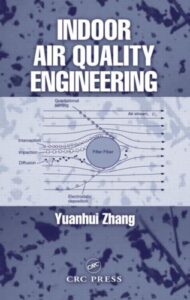Indoor Air Quality Engineering
Indoor Air Quality Engineering
Indoor Air Quality Engineering is an accumulation of my lecture notes. Its aim is to explain the principles in a direct way so that a reader can study them independently. An instructor using this book as a textbook may tailor the contents according to the designated credit hours. The 15 chapters can be divided into three modules:
- Airborne pollutant properties and behavior
- Measurement and sampling efficiency
- Air-cleaning engineering
In addition, the class is divided into several teams to work on different class projects. Many students have brought their own real-world projects into the class. For example, one team evaluated several types of commercial air cleaners from superstores and made suggestions for improvement.
You can also Read Valve Selection Handbook 4th Edition
Air is a critical element to many living things. People, for example, may survive for two weeks without food and for two days without water. But without air, a person may only survive for two minutes. In daily life, an average person consumes approximately 1 kg of food, 2 kg of water, and 20 kg of air. Further, in developed countries, an average working person spends over 90% of his or her lifetime indoors.
Indoor Air Quality Engineering Content
- Air Quality and You
![Indoor Air Quality Engineering]()
- Properties of Indoor Air Contaminants
- Particle Size Statistics and Distribution
- Mechanics of Particles
- Gas Properties and Kinetics
- Diffusion and Coagulation of Particles
- Deposition, Production, and Resuspension of Airborne Particles
- Impaction
- Sampling Efficiency
- Filtration
- Aerodynamic Air Cleaners
- Electrostatic Precipitation
- Control of Gaseous Pollutants
- Ventilation Requirements and Measurement
- Ventilation Effectiveness and Air Distribution
In order to define air quality, a definition of clean air or standard air should first be established. Typically, clean air is the dry atmosphere air found in rural areas or over the ocean far from air pollution sources.Based on the definition of clean air,
air quality refers to the degree of pollution of the clean air. In general, the lower the concentration of airborne pollutants, the
better the air quality.


Comments are closed.